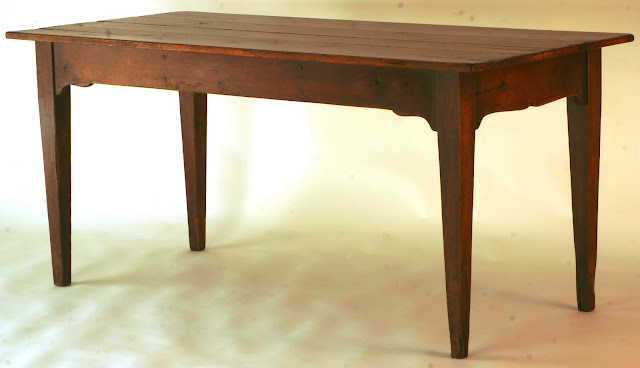| Close view of the end; this is not reclaimed wood. Reclaimed wood has issues and must be used very selectively if at all. There is the ever-present risk of ruining tool knives on hidden staples, nails, birdshot and who-knows-what. Also, reclaimed wood is not as dry as kiln dried wood and hasn't had water forced out the way only kiln-drying will do. Wood that starts out having too much moisture content will shrink, crack, distort, and do funny stunts over time; also, if extra moisture is present, finishes will not penetrate as deeply. Therefore the bulk of our wood we use is new and from a trusted local source. The "cracks" and other texture marks you see here were done by hand; wood is solid alder and is newly harvested and kiln dried. |























